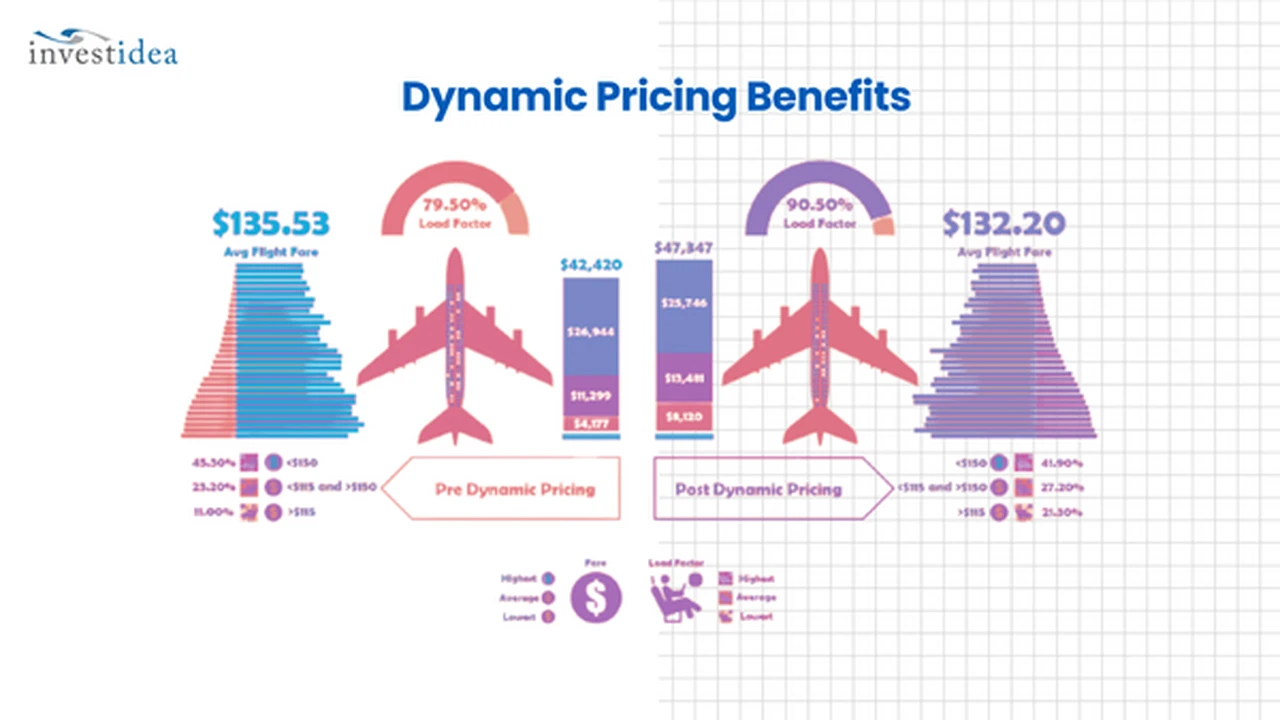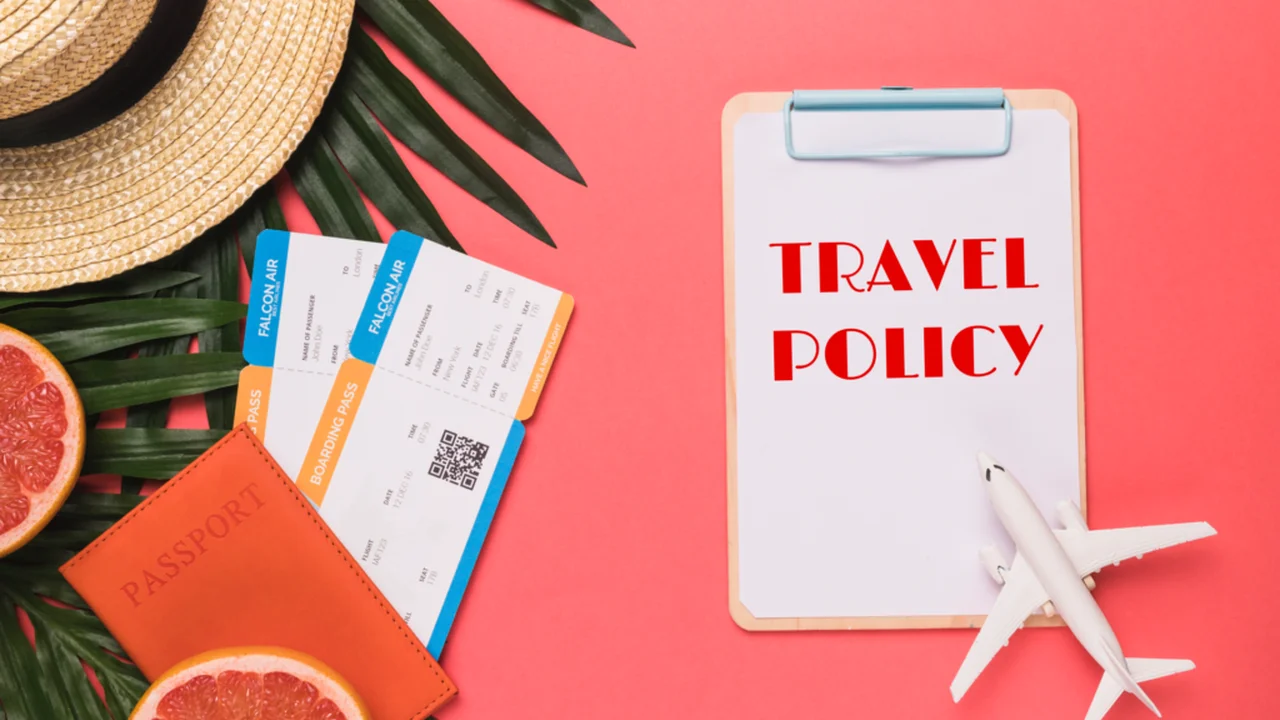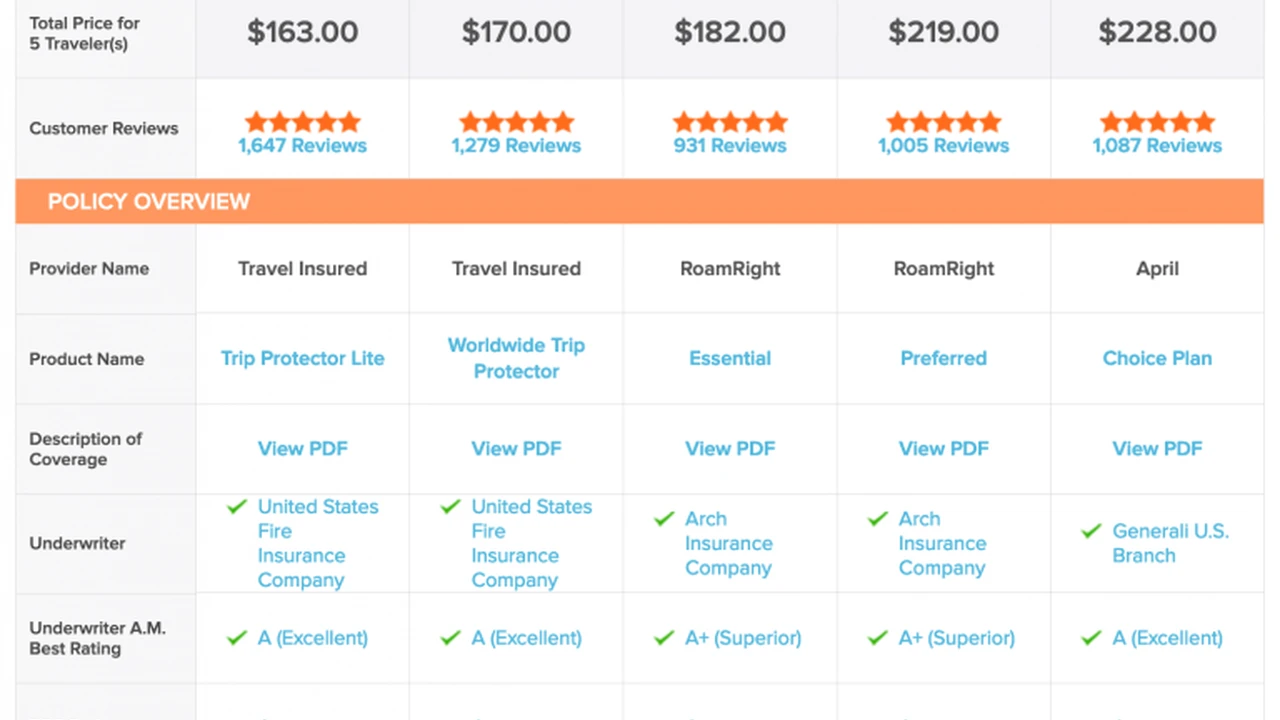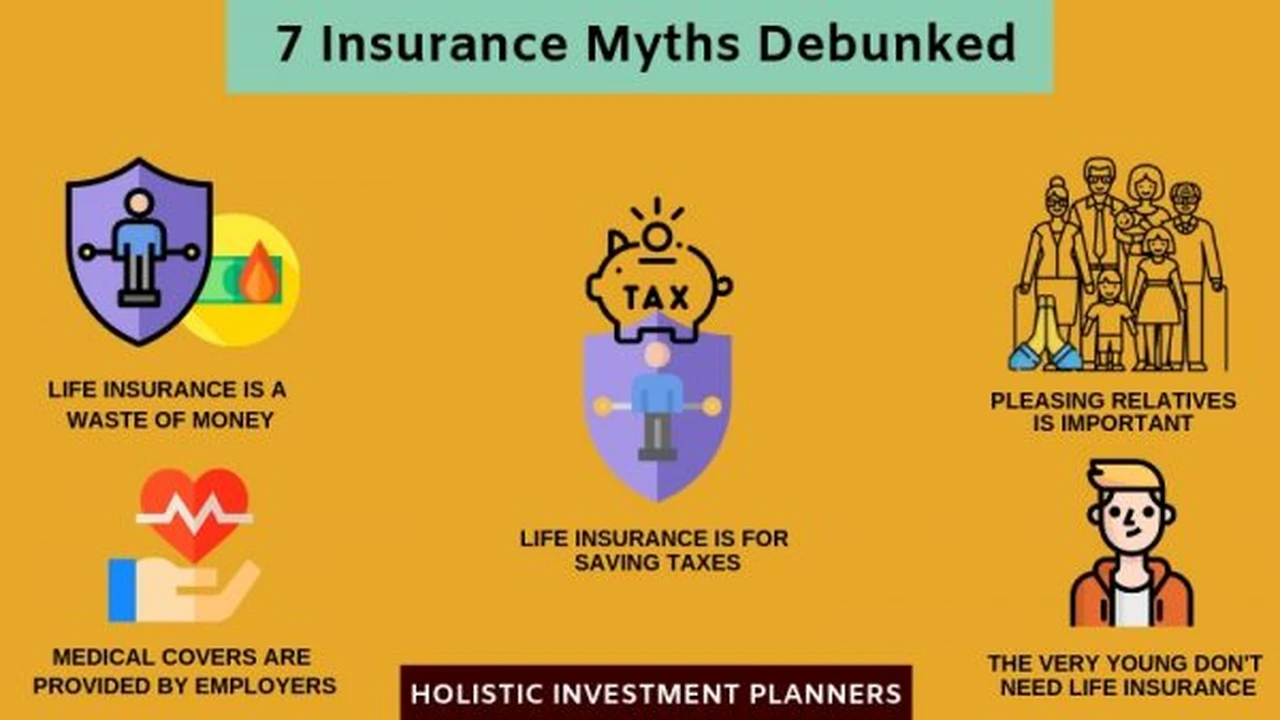The Impact of Dynamic Pricing on Travel Policies
Understanding how fluctuating prices affect travel budgets and how policies can adapt to dynamic market conditions.

The Impact of Dynamic Pricing on Travel Policies
Navigating the Volatile Landscape of Travel Costs
Hey there, business travelers and finance folks! Let's talk about something that probably keeps you up at night: dynamic pricing. It's everywhere these days, from your favorite airline tickets to that hotel room you booked last minute. But what exactly is it, and more importantly, how does it mess with your carefully crafted travel policies and budgets? We're going to dive deep into this beast, explore its nuances, and figure out how your company can not just survive but thrive amidst its unpredictable nature.
Dynamic pricing, in a nutshell, is when the price of a product or service changes in real-time based on demand, supply, competitor pricing, time of day, booking patterns, and a whole host of other factors. Think about it: the flight you looked at this morning might be 20% more expensive by lunchtime, or that hotel room could suddenly drop in price if there are last-minute cancellations. For individual consumers, it's annoying. For businesses managing large travel budgets, it's a full-blown headache. It makes forecasting a nightmare and sticking to a fixed travel policy feel like trying to catch smoke.
Understanding the Mechanics of Dynamic Pricing in Business Travel
So, how does this beast actually work in the travel industry? It's a complex algorithm, really. Airlines use sophisticated revenue management systems that adjust fares based on seat availability, historical booking data, competitor prices, and even the day of the week or time of year. Hotels do the same, factoring in occupancy rates, local events, and even weather forecasts. Car rental companies, train operators – they all play this game. The goal for them is simple: maximize revenue. For you, the corporate travel manager, it means constant vigilance and a policy that's flexible enough to bend without breaking.
Let's break down some of the key drivers:
- Demand and Supply: High demand for a specific route or hotel during a peak season? Prices go up. Low demand? They might drop. Simple economics, but applied with lightning speed.
- Time of Booking: Often, booking further in advance can secure better rates, but sometimes last-minute deals pop up. It's a gamble.
- Competitor Pricing: Travel providers constantly monitor each other. If one drops a price, others might follow suit to remain competitive.
- Historical Data: Airlines and hotels analyze years of data to predict demand patterns for specific dates and times.
- Ancillary Services: Don't forget about baggage fees, seat selection, Wi-Fi – these are often dynamically priced too, adding to the overall cost.
The Direct Impact on Your Corporate Travel Budget
The most obvious impact of dynamic pricing is on your budget. Fixed budgets become incredibly difficult to maintain. If your policy states a maximum flight cost of $500 for a specific route, but dynamic pricing pushes it to $700, what do you do? You either exceed the budget, or your employee can't travel. This leads to:
- Budget Overruns: The most common issue. Unpredictable price hikes can quickly deplete your travel budget.
- Forecasting Challenges: It's hard to predict future travel costs when prices are constantly shifting. This makes long-term financial planning a nightmare.
- Policy Compliance Issues: Employees might struggle to find options within policy limits, leading to frustration and non-compliance.
- Increased Administrative Burden: More exceptions, more approvals, more time spent by your travel team trying to find compliant options.
- Reduced Employee Satisfaction: If employees feel restricted or constantly have to jump through hoops to book travel, it impacts their morale.
Adapting Your Travel Policy for Dynamic Pricing Resilience
So, how do you fight back? You can't stop dynamic pricing, but you can certainly adapt your travel policy to be more resilient. The key is flexibility, data, and technology. Here are some strategies:
Embracing Flexibility with Price Caps and Tiers
Instead of rigid fixed price caps, consider implementing flexible price caps or tiered systems. For example, instead of a flat $500 limit, you might set a range, say $450-$600, with a clear approval process for anything above the lower threshold. Or, you could tier it by destination or travel class. For instance, a flight to a major hub might have a higher cap than a regional flight. This gives employees and travel managers more wiggle room without completely abandoning cost control.
Leveraging Advance Booking Incentives and Mandates
One of the most effective ways to combat dynamic pricing is to encourage or mandate advance bookings. Prices generally tend to be lower further out. Your policy could offer incentives for booking X days in advance (e.g., a slightly higher per diem) or mandate booking at least Y days out for non-emergency travel. This requires planning, but the savings can be significant. However, be mindful of last-minute business needs – your policy needs exceptions for urgent travel.
Implementing Preferred Vendor Programs and Negotiated Rates
This is a classic for a reason. By consolidating your travel spend with a few preferred airlines, hotel chains, or car rental companies, you can negotiate static or semi-static rates that are less susceptible to dynamic fluctuations. These rates are often lower than public rates and provide more predictability. Your policy should clearly state which vendors are preferred and encourage their use, perhaps even making it mandatory for certain travel types.
Utilizing Dynamic Policy Rules and AI Powered Tools
This is where technology truly shines. Modern travel management platforms can incorporate dynamic policy rules. For example, a rule could be: 'If the flight price for a specific route exceeds the average price for that route by more than 15% in the last 30 days, flag for review.' AI-powered tools can even predict price changes and recommend optimal booking times. This moves you from reactive to proactive.
Focusing on Total Trip Cost Optimization
Sometimes, the cheapest flight isn't the cheapest trip. Your policy should encourage employees to consider the total cost. A slightly more expensive flight that avoids an overnight stay, or a hotel that includes breakfast and Wi-Fi, might be cheaper overall. Educate your employees on this concept. Your policy can guide them to make these holistic decisions.
Top Travel Management Platforms for Dynamic Pricing Adaptation
Now, let's talk about the tools that can actually help you implement these strategies. These platforms are designed to give you visibility, control, and flexibility in a dynamic pricing environment. They often integrate booking, expense management, and policy enforcement into one seamless system.
1. SAP Concur
Overview: SAP Concur is a giant in the travel and expense management space. It offers a comprehensive suite of tools for booking, expense reporting, and policy enforcement. Its strength lies in its robust integration capabilities and scalability for large enterprises.
How it helps with Dynamic Pricing: Concur allows you to set up highly granular policy rules, including dynamic price caps based on routes, dates, and even traveler profiles. It can flag out-of-policy bookings in real-time, requiring manager approval. Its reporting features provide deep insights into spending patterns, helping you identify trends and adapt your policy. While it doesn't directly 'predict' price changes, its integration with various booking channels means it pulls real-time pricing data, and its policy engine can react to it. It also facilitates preferred vendor integration, ensuring employees see negotiated rates first.
Key Features: Online booking tool, expense reporting, invoice management, policy enforcement engine, mobile app, robust reporting and analytics, integration with ERP systems.
Use Case: Large enterprises with complex travel needs and a desire for a highly integrated, end-to-end solution. Companies that need strong compliance and detailed reporting.
Pricing: Subscription-based, typically custom quotes based on company size, number of users, and modules required. Can range from a few dollars per user per month for basic expense management to significantly more for full travel and expense suites.
2. TripActions (now Navan)
Overview: TripActions, recently rebranded as Navan, is known for its modern, user-friendly interface and focus on employee experience. It leverages AI and machine learning to offer personalized booking options and real-time support.
How it helps with Dynamic Pricing: Navan's strength against dynamic pricing lies in its AI-powered recommendations. It learns from past booking behavior and current market conditions to suggest optimal booking times and options that are likely to stay within policy and budget. It offers 'dynamic policy' features where it can adjust recommendations based on real-time price fluctuations. It also incentivizes employees to choose more cost-effective options by offering rewards or credits, which can be a powerful tool against rising prices. Their real-time inventory access means they're always showing the most current prices.
Key Features: AI-powered booking recommendations, real-time support, integrated expense management, rewards for cost-saving choices, global inventory, robust reporting.
Use Case: Companies that prioritize employee experience and want to leverage AI for smarter booking decisions. Ideal for businesses looking for a modern, intuitive platform that encourages cost-conscious behavior.
Pricing: Subscription model, often based on active users and transaction volume. Quotes are customized, but generally competitive for mid-market to enterprise clients.
3. Egencia (an Expedia Group Company)
Overview: Egencia combines the power of Expedia's vast travel inventory with corporate travel management tools. It offers a global platform with a strong focus on traveler support and policy compliance.
How it helps with Dynamic Pricing: Egencia provides access to a massive inventory of flights, hotels, and car rentals, allowing for a wide range of options to combat dynamic pricing. Their platform allows for detailed policy configuration, including setting preferred vendors and price limits. While not as overtly AI-driven as Navan in its recommendations, its extensive inventory and ability to compare multiple options in real-time help users find the best available prices within policy. Their travel managers can also assist in finding alternatives when dynamic pricing makes initial options too expensive.
Key Features: Global travel inventory, online booking tool, 24/7 traveler support, policy enforcement, expense integration, reporting and analytics.
Use Case: Companies with significant international travel, looking for a global solution with strong support and a wide range of booking options. Good for businesses that value a blend of self-service and human assistance.
Pricing: Varies based on volume and services. Typically a transaction fee model combined with a management fee. Custom quotes are standard.
4. TravelPerk
Overview: TravelPerk positions itself as a modern business travel platform with a focus on flexibility, 24/7 support, and a user-friendly experience. They are known for their 'FlexiPerk' feature, which allows for refundable bookings.
How it helps with Dynamic Pricing: TravelPerk's platform pulls real-time pricing from a vast array of sources, ensuring users see the most current rates. Their policy engine allows for flexible rules, and their reporting helps identify where dynamic pricing is hitting hardest. The 'FlexiPerk' option, while an add-on, can be a strategic tool against dynamic pricing volatility. If prices drop after booking, you can cancel and rebook, recovering a significant portion of the cost. This provides a safety net against overpaying due to dynamic fluctuations, especially for bookings made far in advance.
Key Features: Extensive inventory, 24/7 support, FlexiPerk (refundable bookings), integrated expense management, policy enforcement, user-friendly interface.
Use Case: Growing businesses and mid-market companies that value flexibility, excellent support, and a modern booking experience. Ideal for those who want to mitigate the risk of dynamic pricing through refundable options.
Pricing: Tiered subscription model (Free, Premium, Pro, Enterprise). The 'Free' tier offers basic booking. Premium and Pro tiers add features like policy enforcement, expense integration, and FlexiPerk. FlexiPerk is an additional percentage of the booking cost (e.g., 10%).
5. Rydoo
Overview: Rydoo focuses heavily on simplifying expense management and integrating it seamlessly with travel booking. It's known for its intuitive mobile app and automated expense processes.
How it helps with Dynamic Pricing: While Rydoo's primary strength is expense management, its integrated booking module allows companies to set up policy rules that react to dynamic pricing. It can enforce preferred vendors and spending limits. Its real-time expense tracking means you get immediate visibility into actual spend versus budget, allowing you to react quickly if dynamic pricing is causing overruns. The focus on digital receipts and automated reconciliation also reduces the administrative burden associated with managing fluctuating costs.
Key Features: Automated expense management, mobile app for receipt capture, integrated booking, policy enforcement, real-time reporting, per diem management.
Use Case: Companies looking for a strong, user-friendly expense management solution that also offers integrated travel booking and policy enforcement. Particularly good for businesses wanting to streamline the entire 'spend' process.
Pricing: Subscription-based, typically per user per month. Offers different tiers (Essential, Pro, Enterprise) with varying features. Custom quotes for larger organizations.
Best Practices for Policy Implementation and Communication
Having the right tools is only half the battle. How you implement and communicate your policy is crucial, especially when dealing with something as fluid as dynamic pricing.
Clear Communication and Employee Education
Don't just send out a dry policy document. Explain why the policy is structured the way it is, especially regarding dynamic pricing. Educate employees on how to use the booking tools effectively to find the best rates. Show them the impact of booking last minute versus in advance. Provide examples. The more they understand, the more likely they are to comply and help save costs.
Regular Policy Review and Adjustment
Dynamic pricing means your policy can't be static. Schedule regular reviews – quarterly or semi-annually – to assess its effectiveness. Are you consistently over budget on certain routes? Are employees struggling to find compliant options? Use the data from your travel management platform to identify pain points and adjust your policy accordingly. This might mean adjusting price caps, adding new preferred vendors, or refining booking windows.
Leveraging Data Analytics for Insights
Your travel management platform is a goldmine of data. Use it! Analyze spending patterns, average costs per route, booking lead times, and compliance rates. This data will reveal where dynamic pricing is hitting you hardest and where your policy might need tweaking. Are flights to Singapore always exceeding the cap? Maybe that cap needs to be adjusted, or you need to negotiate a specific corporate rate for that route.
Empowering Employees with Smart Choices
Instead of just enforcing rules, empower your employees to make smart, cost-conscious decisions. Provide them with the tools and information they need. Some platforms even offer gamification or incentives for choosing cheaper options. When employees feel like they're part of the solution, compliance naturally improves.
The Future of Travel Policies in a Dynamic World
Dynamic pricing isn't going anywhere. In fact, it's likely to become even more sophisticated with advancements in AI and real-time data processing. The future of travel policies will be less about rigid rules and more about intelligent guidelines. We'll see more:
- Predictive Analytics: Tools that don't just show current prices but predict future price movements, advising on the optimal time to book.
- Personalized Policies: Policies that adapt not just to the market but to the individual traveler's role, travel history, and preferences, while still maintaining cost control.
- Greater Automation: More automated approvals and exception handling, reducing the administrative burden.
- Sustainability Integration: Dynamic pricing might also factor in carbon emissions, guiding travelers towards more eco-friendly options.
Ultimately, adapting to dynamic pricing means embracing flexibility, leveraging technology, and fostering a culture of cost-consciousness within your organization. It's a continuous process of learning, adjusting, and optimizing. But with the right strategies and tools, you can turn this challenge into an opportunity for smarter, more efficient business travel.
:max_bytes(150000):strip_icc()/277019-baked-pork-chops-with-cream-of-mushroom-soup-DDMFS-beauty-4x3-BG-7505-5762b731cf30447d9cbbbbbf387beafa.jpg)






